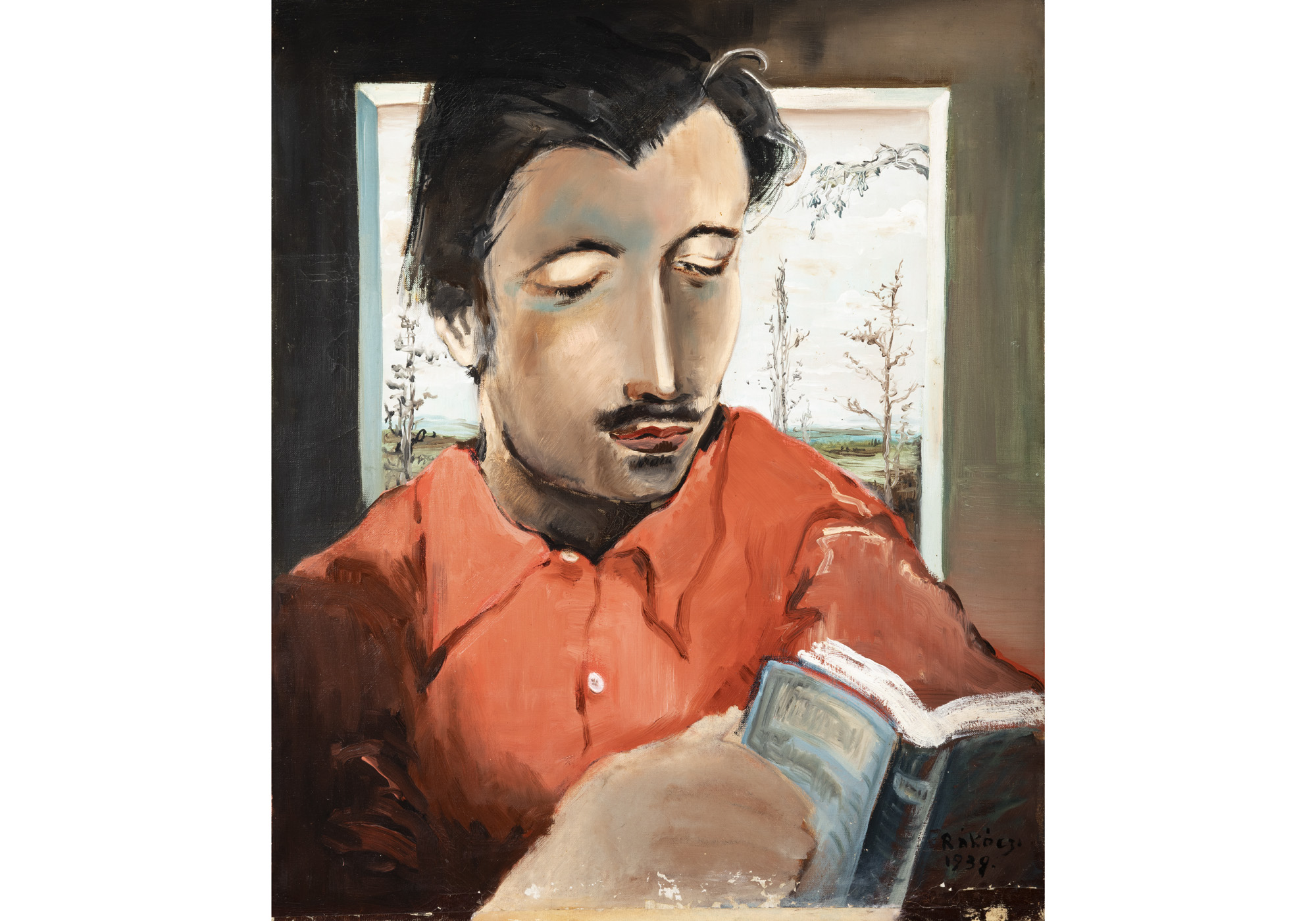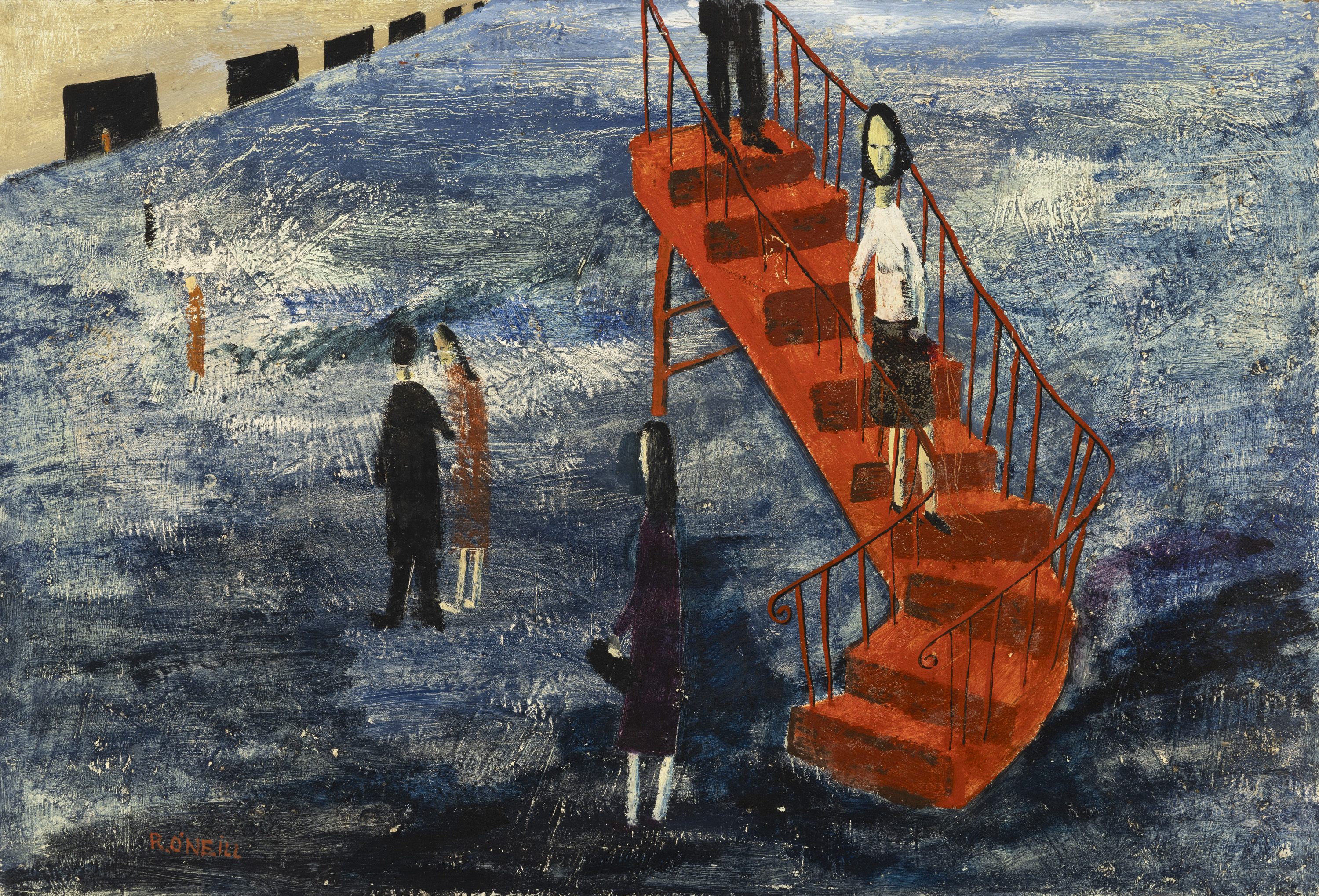Departments
.svg)


A woman with many identities, Yvonne Aupicq was presented in so many different forms over the course of her relationship with Orpen that it is difficult for us to get a sense of who she really was. Her birth certificate and other historical records have recently revealed that her identity was further misrepresented, firstly by the incorrect spelling of her name, it is not Aubicq but Aupicq and that her father was not the mayor of Lille as previously believed but a school teacher in Hergnies. As we can see from the exhibition history of this work, the painting was also wrongly listed as 'Lady Diana Manners in theatrical costume', when on show in The National Gallery of Ireland’s centenary exhibition for Orpen in 1978.
Orpen painted her initially as Frida Nater, a German spy, in an attempt to mask their true relationship as lovers. As the official allied war artist, he was tasked with documenting the reality of life on the front line. His work from this period was supposed to be strictly related to the conflict and in particular the lives of the soldiers fighting.
There are two portraits of Yvonne from this period, now both titled ‘Refugee’ and held in the collection of the Imperial War Museum in London. One shows her partially nude, holding a white sheet up to cover her breasts. The other she is presented sitting, wearing a rudimentary blue coat and dress. In both works her hair is instantly identifiable, tousled blonde curls sitting on top of her head.
The War Office was immediately suspicious of Orpen’s story about the German spy which he had embellished further with falsehoods. On being recalled to London to explain himself, he retracted the story and was reprimanded. However, he maintained his position in France due to his connections within the War Office itself and was favoured again when an artist was needed to document the post war peace process.
Yvonne had met Orpen, we understand, while working as a nurse during the war. He had been admitted to hospital with a suspected case of scabies which ended up being a far more serious case of blood poisoning as he recounts in his wartime memoir ‘An Onlooker in France’. Their relationship continued after 1918 when Orpen was appointed as the official artist to The Paris Peace Conference. They relocated to capital and over the following decade he painted her numerous times, often nude as in Amiens 1914, or The Rape and Nude Girl Reading (1921). Working with her as his model during these early years after the war allowed Orpen an opportunity to re-fuel his creativity.
On this occasion she is disguised further, not as a war time collaborator or nude model but as a nun. His young and beautiful companion is recast as the pious Sister X. There is another version of this portrait, with Yvonne set against a completely white background. It is not unusual for artists to produce more than one example of a portrait, exploring different variations of the composition. However, the only difference between these two works is in the background colour. This present work, starker in its contrasts, was kept by Orpen for his own personal collection, the other gifted to Yvonne.
As a composition, Orpen often favoured a tight, close-up format to give greater scrutiny to the sitter’s features. The black background serves to enhance the brilliant white of her religious habit. It frames her face as the light falls delicately across her features, the long bridge of her nose and lips. Her eyes seem to express a sense of sorrow or inner turmoil, suggesting the emotive connection between the sitter and the artist.
The relationship between an artist and their model is complex and we get the sense that Orpen maintained a deep curiosity and interest in Yvonne over their decade spent together. These portraits represented different aspects of her personality, at least as seen through Orpen’s eyes. In this work her youth and innocence are symbolised in the white shroud. Using the strong contrast of the white against black, with only her face visible to us, suggests a desire to limit the focus of the work. There are no extraneous details, no background scene, it is just Yvonne. The simple wooden crucifix hanging around her neck captures our attention, with the body of Christ at the centre of the composition. Yvonne, or Sister X meets our gaze, asking us to consider this bodily sacrifice, which is central to the Catholic faith and to ultimately remind us of the fragility of human life.
Lot 61 in our upcoming Important Irish Art Auction, taking place on Wednesday 1st March at 6pm.




Through this article, let our expert Adam Pearson guiding you to the (re)discovery of the once established Irish painter Richard O’Neill.












Buying at Auction and the Role of Antiques in a Modern Home




Important Irish Art Auction Highlights

Oliver Dowling Collection by Aidan Dunne




2024 is a year in which Adam’s wants to recognise the key role buying antique furniture and furnishings at auction contributes greatly to the sustainable initiative. In 2019 the Environmental Protection Agency reported stark figures that each year in Ireland 1.2 million reusable bulky items, primarily furniture goes into landfill. Similar to the problem of ‘fast fashion’, the constant production and consumption of new items is leading to rapidly growing waste problem. We want to acknowledge those who are already buying second hand or antique furniture at auction and to encourage new buyers by highlighting the benefits of acquiring affordable, well-made quality items that are built to last.







Irish author, recipe creator and lifestyle influencer, Indy Parsons, selects her favourite pieces from our upcoming Fine Jewellery & Watches auction










.jpg)

Cork-born Irish actress, Sarah Greene, selects her favourite pieces from our upcoming Fine Jewellery & Watches auction









Editor-in-Chief of IMAGE Publications, Lizzie Gore-Grimes, selects her favourite pieces from our upcoming Fine Jewellery & Watches auction

Our upcoming Fine Jewellery & Watches auction on September 13th features a prime example of Van Cleef & Arpel's renowned 'Mystery Setting'


Our June auction offers a once-in-a-lifetime opportunity to acquire one of the great masterpieces of Irish art and icons of Dublin’s history.



Georgia Chiesa selects some of her favourite lots in the upcoming Vintage Wine & Spirits Auction


"Beating the bounds is a tradition that can be traced back to the medieval period. At this time, land was divided into parishes and the clergy and church wardens held the responsibility for its upkeep and management. It was up to the Church to ensure that its parishioners knew the local boundary lines and, before maps became commonplace, this had to be kept as a mental record."

Adam’s in conjunction with Suzanne MacDougald are proud to host an online timed auction of artworks to aid the Irish Red Cross’s humanitarian work in delivering vital services to millions of people impacted by the conflict in Ukraine. With no buyers premium 100% of the hammer price will go directly to the Irish Red Cross.

Ros Drinkwater writes of Jack B Yeats' 'The Boat' in the Business Post:


With a consolidated result of €320,000,the At Home sale in Stephan’s Green, was a great success.

